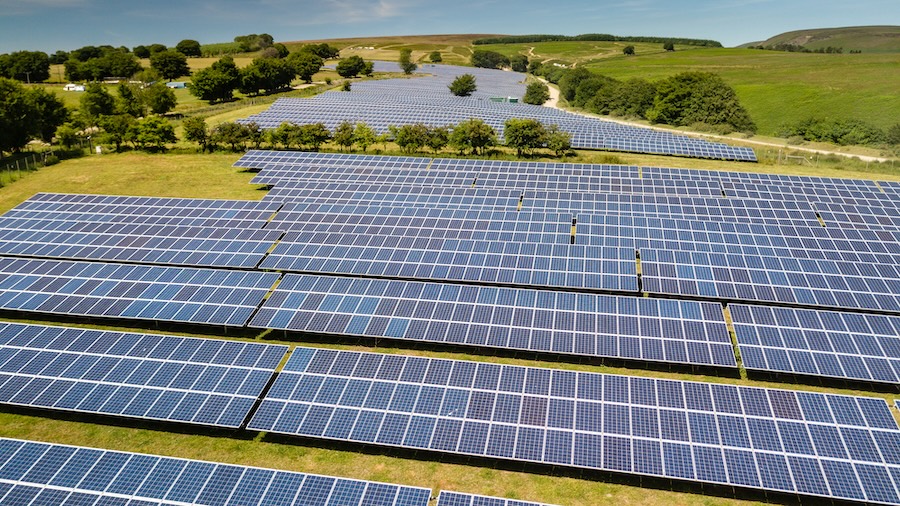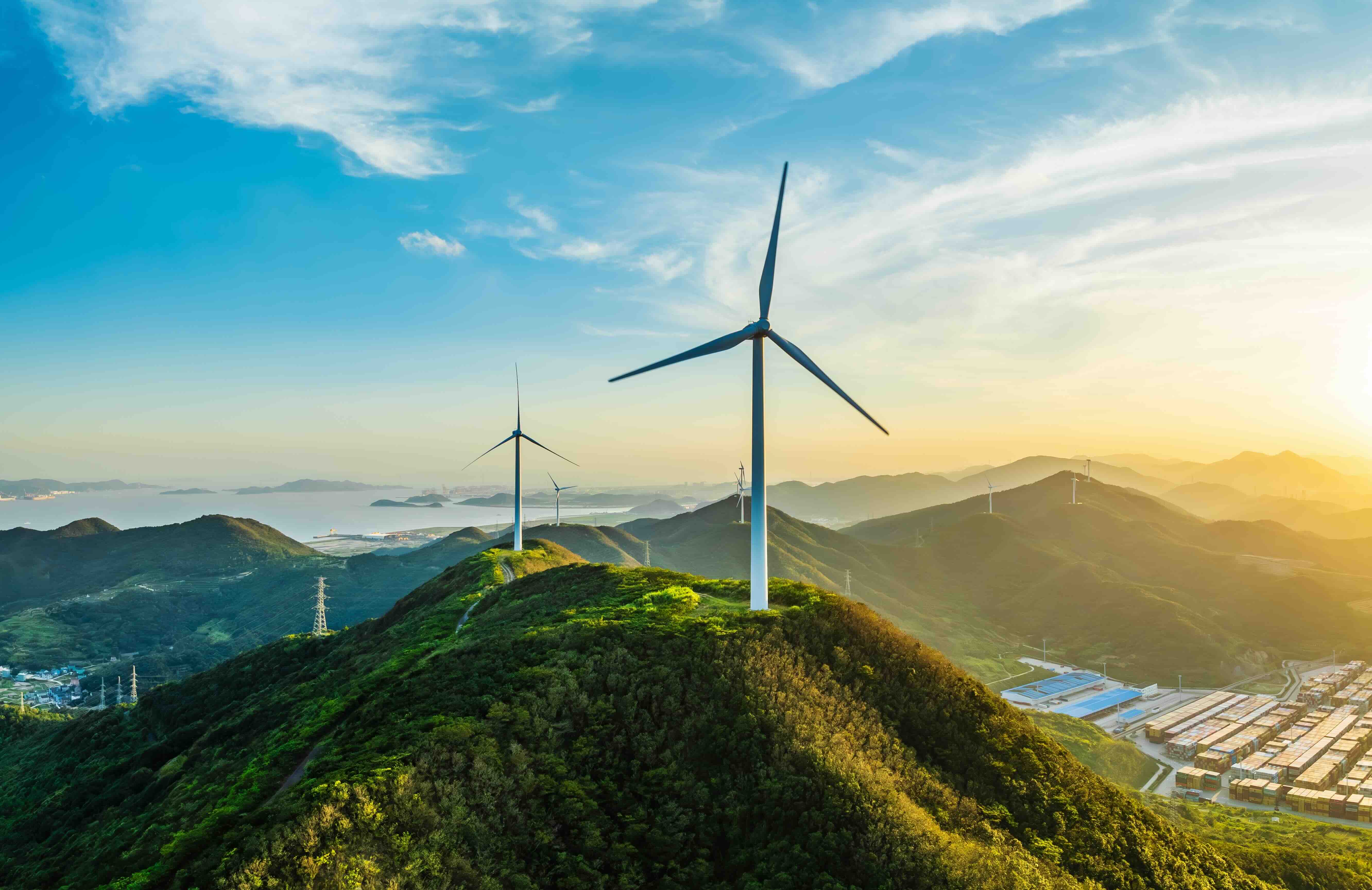The “One, Big, Beautiful Bill” and the implications for corporate taxpayers and the clean energy industry
This new draft tax bill provides short-term stability for clean energy through clearer 2025 tax credit guidance, but creates long-term uncertainty due to accelerated credit phase-outs and complex FEOC restrictions.
NOTE TO READERS: This content is current as of Friday, June 20, 2025. Given current discussions in the Senate, we will post updates here as they become available.
On June 16, the Senate Finance Committee released its much-anticipated draft of the budget reconciliation bill. The proposed Senate bill extends tax cuts from the Tax Cuts and Jobs Act of 2017, while rolling back parts of the Inflation Reduction Act to help cover the cost. This comes on the heels of the House’s version of the bill that passed the floor on May 22, 2025, by a vote of 215-214. After the Senate votes, it will return to the House, which may lead to further changes.
Short-term stability
The proposed Senate bill provides short-term stability, which will result in a meaningful uptick in clean energy transactions throughout the rest of the 2025 and for the next several years.
Since the House bill was passed, we have observed a significant uptick in interest from tax credit buyers. We expect increased activity through the rest of 2025 and for the next 3-5 years, given the proposed Senate bill provides clear guidance that near-term tax credits eligible under the IRA (and associated transfers) will be respected. Most notably:
- Tax credits will not be retroactively repealed for the 2025 tax year.
- Transferability is preserved for all credit types, with the caveat that tax credits cannot be sold to Specified Foreign Entities (SFEs).
- Legacy §45 Production Tax Credits (PTCs) and §48 Investment Tax Credits (ITCs), which began construction before 2025, are not changed.
- Many technology-neutral credits (§45Y or §48E), including energy storage, geothermal, hydropower, and nuclear, remain eligible for the full credit value, as long as construction begins by 2033.
- Wind and solar projects specifically are subject to an accelerated phasedown schedule for projects that begin construction starting in 2026. Credits will be eliminated for projects that begin construction in 2028 and beyond.
- The phasedown is based on the beginning of construction date. Wind and solar developers are rushing to start construction on projects in 2025, which should create a steady pipeline of projects for the next several years (projects have four years from beginning of construction to be placed into service for tax purposes).
- The §45X Advanced Manufacturing Production Credits (AMPCs) phase-down schedule is largely unchanged from the IRA. Components produced and sold through 2029 are eligible for the full credit, with a phase-down starting in 2030. Components produced and sold after 2032 are not eligible for credits. There are several meaningful exceptions:
- The provision relating to the sale of integrated components that are produced and sold after 2026 is repealed, which may impact certain solar component manufacturers.
- Wind components are not eligible for credits if produced and sold after 2027. Critical minerals have a longer eligibility period, with a phasedown in credits starting in 2031.
- Critical minerals produced and sold after 2033 are not eligible.
- There are no changes in the phasedown schedule for the §45Q Credit for Carbon Oxide Sequestration and the §45U Zero-Emission Nuclear Power Production Credit.
- Complex Foreign Entity of Concern (FEOC) restrictions were introduced, which will add significant risks and compliance burdens. However, there are short-term exemptions (e.g., at the project level, FEOC restrictions are intended to apply to projects that begin construction after December 31, 2025).
Assume that the bill becomes law in September 2025, and a project begins construction by December 2025. A project that generates a tech-neutral credit (§45Y or §48E) will qualify for the full credit value, which can be transferred to a third party. We are already seeing a wave of projects rushing to establish start of construction before the end of 2025.
Unrelated to the adjustments in tax credit eligibility, many corporate taxpayers have held off on purchasing 2025 credits due to a lack of certainty regarding their 2025 tax liability. In particular, three outstanding tax policies have disrupted tax planning. The Senate bill proposes the following changes:
- §174 R&D Expenses: Reinstate immediate expensing of R&D costs for tax years from 2025 to 2029
- Bonus depreciation: Reinstate 100% bonus depreciation for property acquired after January 19, 2025, and before January 1, 2029 (a shift from the proposed House bill, which applied to property acquired through January 1, 2030)
- §163(j): Reinstate the more favorable calculation of the limit on the interest deduction under §163(j) for tax years beginning after December 31, 2024, and before January 1, 2030
The proposed changes will lower corporate tax liabilities, which will reduce the volume of credits that certain buyers can purchase. However, increased certainty on tax liabilities will have the overall impact of giving buyers confidence to move forward on tax credit purchases. In 2024, we saw a wave of buyers enter the market in the 3rd quarter of the year when they had clarity on their tax liabilities. We anticipate a similar dynamic this year, with many buyers coming into the market later in the year and competing for a dwindling number of tax credit opportunities.
Medium- to long-term uncertainty
However, the Senate bill creates medium to long-term uncertainty for the clean energy market, due to proposals such as FEOC restrictions and accelerated tax credit phasedowns.
Major changes in the proposed bill include:
- Accelerated phasedown or reduced eligibility of clean energy tax credits, particularly tech-neutral credits (§45Y or §48E) for solar and wind
- Elimination of the credit for wind and solar leased property that would otherwise qualify for the residential credit under §25D
- The clean hydrogen production credit (§45V) is not available for facilities that begin construction after December 31, 2025
- FEOC restrictions, which will be difficult to comply with as currently written and may slow project development due to increased risk.
Summary of proposed tax credit phasedown

Accelerated phasedown for solar and wind
Solar and wind-related credits are subject to an accelerated phasedown, which will impact upcoming project development.
Tech-neutral credits (§45Y and §48E) generally phase down in 2034 and are eliminated by 2036 based on when the project begins construction. However, the proposed Senate bill phases down tax credits for solar and wind on a significantly shorter timeline:
- Projects that begin construction in 2025 receive 100% of credit value
- Projects that begin construction in 2026 receive 60% of credit value
- Projects that begin construction in 2027 receive 20% of credit value
- Projects that begin construction in 2028 or later receive 0% of credit value
As a result, wind and solar developers are rushing to begin construction this year. Projects can establish start of construction through two well-established methods: the physical work test or the 5% safe harbor, after which they have four years to be placed in service. If developers don't start construction by the end of 2025, they will receive a significantly lower (or no) tax credits, which will have the impact of slowing new development from 2026 onward. Segue Sustainable Infrastructure forecasts 122 GW of project cancellations, resulting in $211 billion less investment in the grid as a result of the proposed bill.
There are several other important ways that wind and solar developer manufacturers are impacted by the proposed Senate bill:
- The credit for wind and solar leased property that would otherwise qualify for the residential credit under §25D is eliminated, which will cause developers to shift away from leases
- For §45X credits, wind components are not eligible for credits if produced and sold after 2027. Certain solar component manufacturers will also be impacted by the repeal of the provision regarding integrated components that are produced and sold after 2026, which potentially will limit the ability for manufacturers to stack credits from components that are integrated into larger products
Transferability preserved in most cases
Transferability is preserved, so long as the transferee is not a Specified Foreign Entity.
There was no mention of transferability in the proposed Senate bill, meaning that tax credit transfers will be available for the same duration as tax credits. However, tax credits cannot be sold to Specified Foreign Entities (SFE), which is defined below:
- Meets any of the criteria outlined in Section 9901(6) of the William Thornberry National Defense Authorization Act (NDAA) for Fiscal Year 2021:
- Is designated as a foreign terrorist organization by the U.S. Secretary of State under Section 219 of the Immigration and Nationality Act (8 U.S.C. § 1189)
- Appears on the Treasury Department’s Office of Foreign Assets Control (OFAC) list of Specially Designated Nationals and Blocked Persons
- Has been linked to criminal activity resulting in a conviction, as alleged by the U.S. Attorney General
- Is identified as a Chinese military company
- Is listed due to the Uyghur Forced Labor Prevention Act
- Is named under Section 154(b) of the NDAA for FY 2024 (specifically, paragraphs 1–7 on page 47 of Public Law 118-31)
- Is a foreign-controlled entity, meaning it is owned or influenced (directly or indirectly) by:
- The government of a covered nation (specifically China, Iran, Russia, or North Korea)
- Its agencies or instrumentalities
- Citizens or nationals of a covered nation
- Entities organized or headquartered in a covered nation
- Or any entity controlled by the above (with “control” defined as owning 50% or more of voting shares, capital, or beneficial interest)
Foreign Entities of Concern
The bill includes complex restrictions to avoid benefiting Foreign Entities of Concern. The current draft will be difficult to comply with, potentially causing a slowdown in future clean energy projects. However, we don’t expect significant market disruption in 2025.
Complex Foreign Entity of Concern (FEOC) restrictions will apply to §48E, §45Y, §45Q, §45U, §45X, and §45Z credits to ensure that the benefit of tax credits does not accrue to China, Russia, Iran, or North Korea.
We do not expect significant disruption to the market in 2025. Most PTCs and ITCs currently in the transfer market began construction before 2025 and therefore qualify for the legacy §45 and §48 credits, which are not subject to FEOC rules.
For the newer §45Y and §48E credits, there is a transition period for complying with FEOC rules (e.g., projects that begin construction by the end of 2025 are not subject to FEOC at the project level. Rules to ensure FEOC compliance at the taxpayer level begin in 2026 and become stricter in 2028).
Most concerning for clean energy developers is the annual compliance requirement to ensure that “specified foreign entities” do not benefit from tax credits. There are also payment restrictions to ensure that prohibited foreign entities do not earn a certain amount of dividends, interest, compensation for services, rents, royalties, or similar payments. For §48E credits, these compliance requirements must be tested for 10 years, and any breach results in a full recapture of the §48E credits. A recapture period this long and this challenging to comply with will make it harder to raise financing or sell tax credits from projects that require FEOC compliance. As a result, we expect the clean energy industry to lobby for clarifications and adjustments to the FEOC restrictions.
Conclusion
We expect a strong, continued mobilization from developers, banks, utilities, and corporations to advocate against the early phasedown of tax credits, particularly related to solar and wind, and to create a workable and simplified version of FEOC regulations.






.png)


.png)